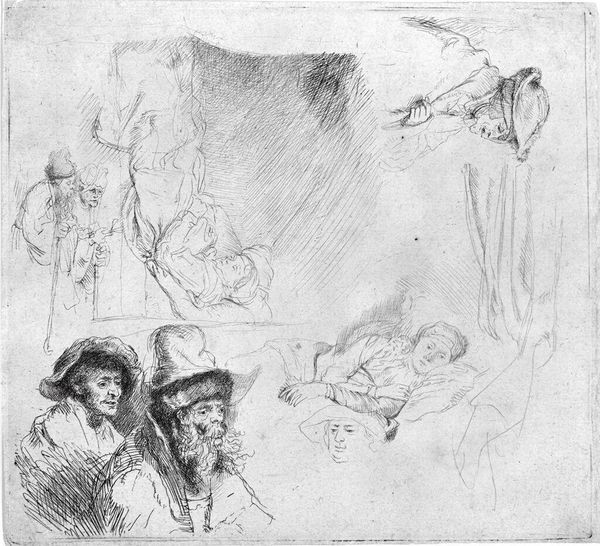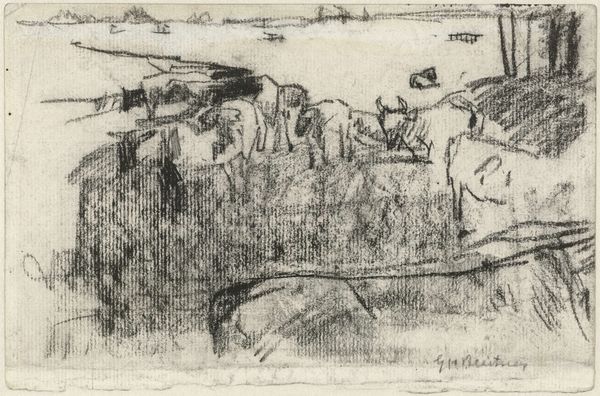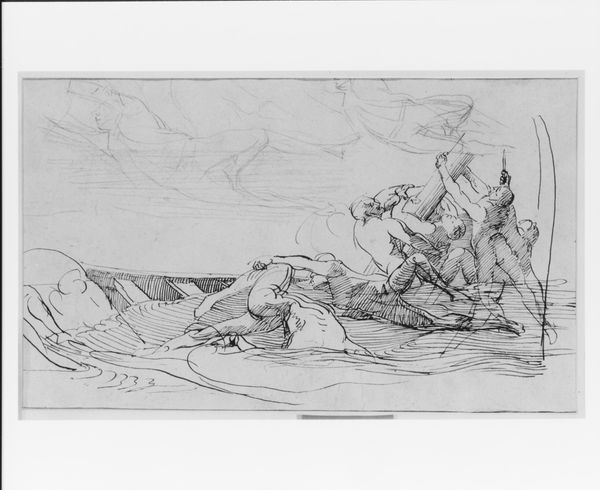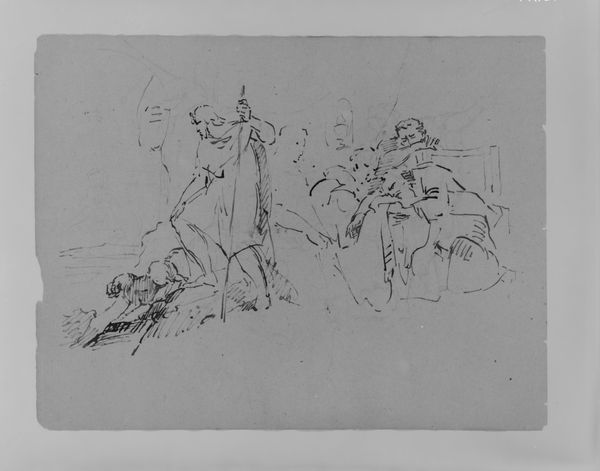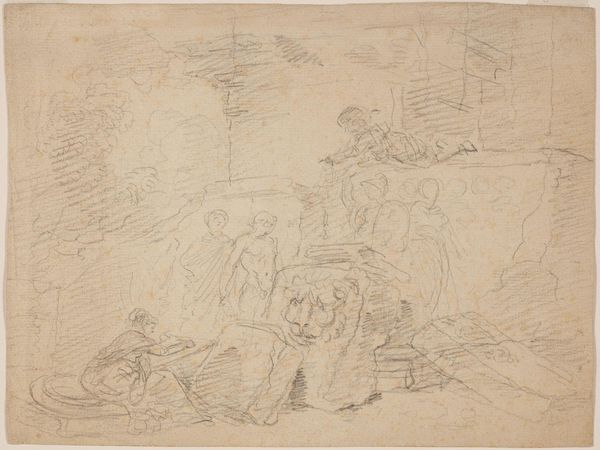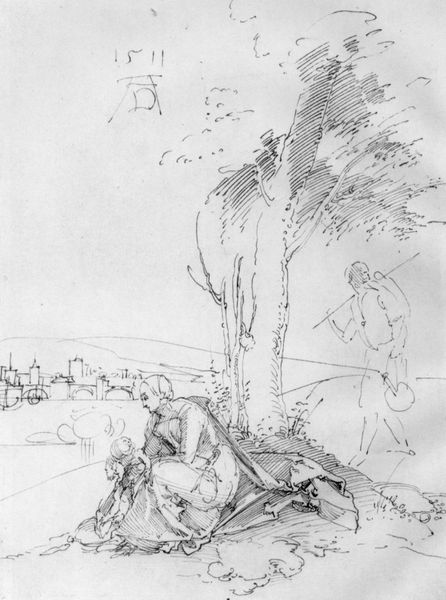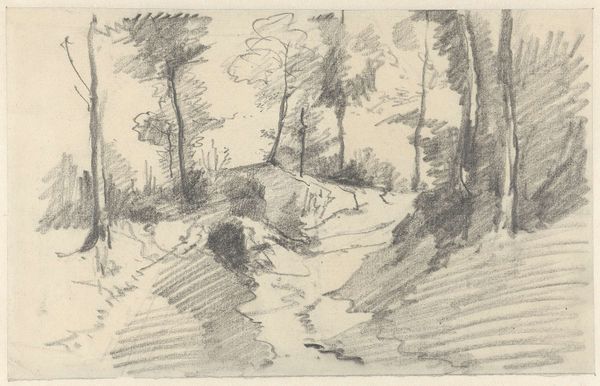
drawing, pencil, charcoal
#
drawing
#
pencil sketch
#
landscape
#
charcoal drawing
#
sketch
#
pencil
#
line
#
charcoal
#
northern-renaissance
Copyright: Public domain
Albrecht Dürer's "Quarry" provides us with a glimpse into the landscape and environmental concerns of the Renaissance. During the period in which Dürer was working, there was a growing interest in representing the natural world, and a rising awareness of the impact of human activities on it. Dürer, as a humanist, would have been part of a movement that valued direct observation and empirical study. His dedication to depicting natural scenes in meticulous detail reflects this intellectual orientation. In "Quarry," we witness a landscape marked by human intervention. The raw, exposed earth and jagged rocks are testament to both the exploitation of natural resources and the artist's fascination with geological forms. The drawing captures the tension between the ideal of a harmonious, unspoiled nature and the reality of an environment increasingly shaped by industry. As you consider this drawing, think about how it captures the shifting relationship between humans and the natural world in Dürer's time. The image serves as both a celebration of the earth's beauty and a subtle commentary on its exploitation.
Comments
No comments
Be the first to comment and join the conversation on the ultimate creative platform.


